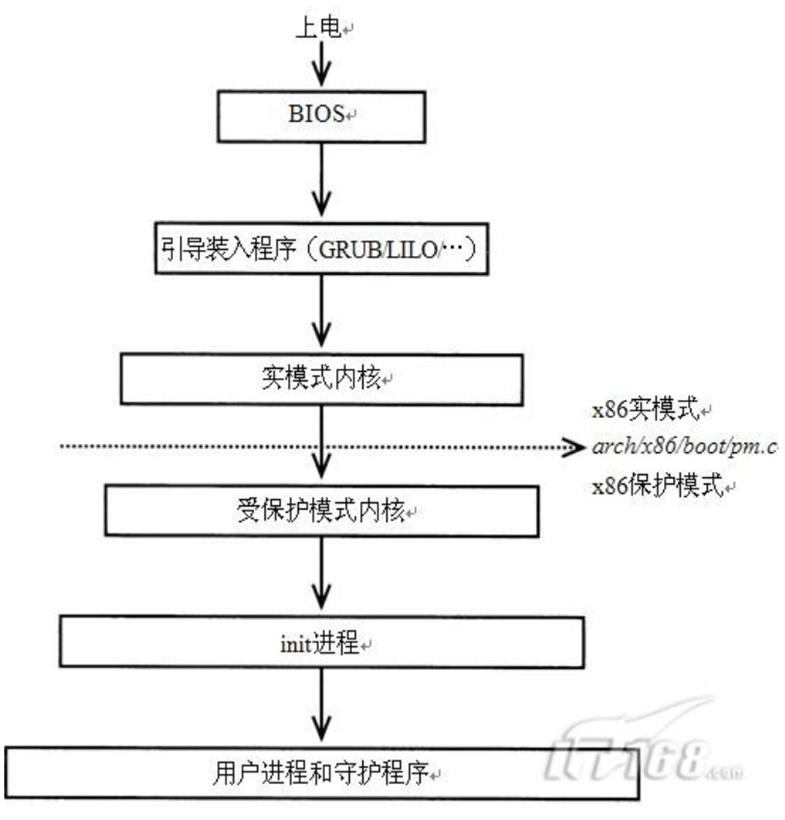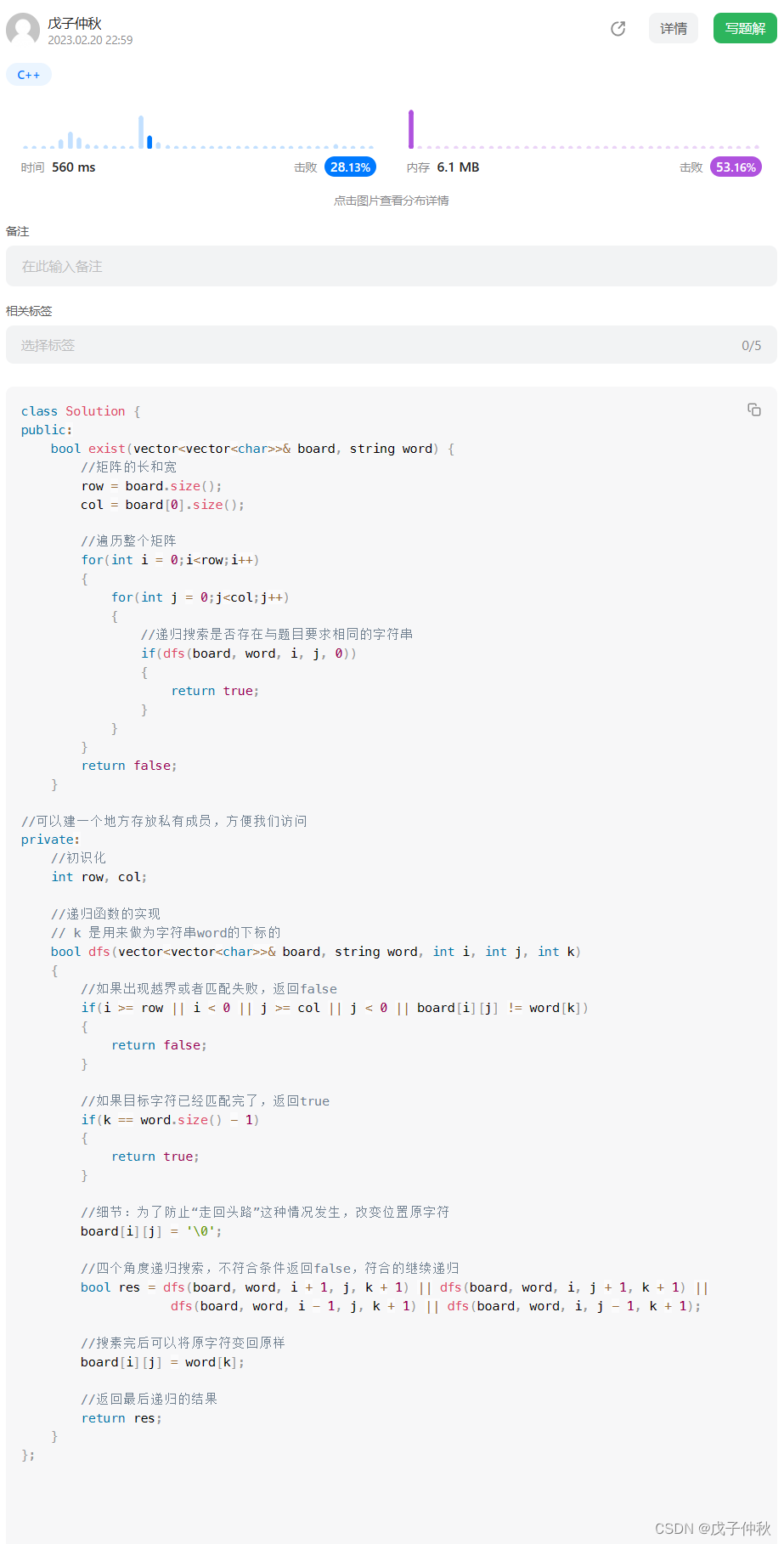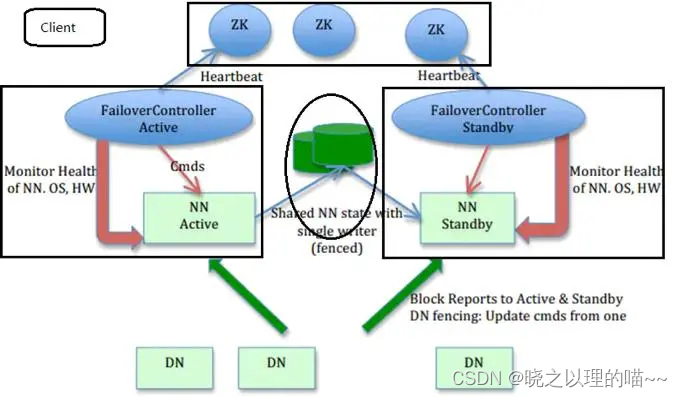
第一段
Version 2.01.1204. Copyright (C) 2010American Megatrends, Inc.
Press <DEL> or <F2> to entersetup. Press <F7> for BBS POPUP Menu.
设备上电,提示按DEL键或者F2键进入BIOS设置。按F8可以调出启动设备列表,可以选择性的启动不同设置
第二段
Linux version 2.6.9-89.ELsmp(mockbuild@hs20-bc1-2.build.redhat.com) (gcc versio n 3.4.6 20060404 (Red Hat 3.4.6-11)) #1 SMP Mon Apr 20 10:34:33 EDT 2009
Linux系统的版本和发布时间,使用cat /proc/version同样能查询到该结果
3.第三段
BIOS-provided physical RAM map:
BIOS-e820: 0000000000000000 - 000000000009c800(usable)
BIOS-e820: 000000000009c800 - 00000000000a0000(reserved)
BIOS-e820: 00000000000e0000 - 0000000000100000(reserved)
BIOS-e820: 0000000000100000 - 000000007b18a000(usable)
BIOS-e820: 000000007b18a000 - 000000007b1ca000(ACPI NVS)
BIOS-e820: 000000007b1ca000 - 000000007b1db000(reserved)
BIOS-e820: 000000007b1db000 - 000000007b1f7000(ACPI NVS)
BIOS-e820: 000000007b1f7000 - 000000007b248000(reserved)
BIOS-e820: 000000007b248000 - 000000007b24b000(ACPI NVS)
BIOS-e820: 000000007b24b000 - 000000007b24f000(reserved)
BIOS-e820: 000000007b24f000 - 000000007b252000(ACPI NVS)
BIOS-e820: 000000007b252000 - 000000007b256000(reserved)
BIOS-e820: 000000007b256000 - 000000007b257000(ACPI NVS)
BIOS-e820: 000000007b257000 - 000000007b25b000(reserved)
BIOS-e820: 000000007b25b000 - 000000007b25e000(ACPI data)
BIOS-e820: 000000007b25e000 - 000000007b262000(reserved)
BIOS-e820: 000000007b262000 - 000000007b2ae000(ACPI NVS)
BIOS-e820: 000000007b2ae000 - 000000007c000000(reserved)
BIOS-e820: 000000007dc00000 - 0000000080000000(reserved)
BIOS-e820: 00000000f8000000 - 00000000fc000000(reserved)
BIOS-e820: 00000000fec00000 - 00000000fec01000(reserved)
BIOS-e820: 00000000fed10000 - 00000000fed14000(reserved)
BIOS-e820: 00000000fed18000 - 00000000fed1a000(reserved)
BIOS-e820: 00000000fed1c000 - 00000000fed20000(reserved)
BIOS-e820: 00000000fee00000 - 00000000fee01000(reserved)
BIOS-e820: 00000000ffa00000 - 00000000ffc00000(reserved)
BIOS-e820: 00000000ffe00000 - 0000000100000000(reserved)
bios提供的物理ram地图
解析从BIOS中读取到的系统内存映射,并打印具体信息。内存映射信息中包含了预留的和可用的内存,内核将随后使用这些信息创建其可用的内存池。
4. 第四段
1073MB HIGHMEM available.
896MB LOWMEM available.
此段为高端内存和低端内存。896 MB以内的常规的可被寻址的内存区域被称作低端内存。内存分配函数kmalloc()就是从该区域分配内存的。高于896 MB的内存区域被称为高端内存,只有在采用特殊的方式进行映射后才能被访问。在启动过程中,内核会计算并显示这些内存区内总的页数。
5.第五段
found SMP MP-table at 000fcc10
NX (Execute Disable) protection: active
DMI 2.6 present.
Using APIC driver default
ACPI: PM-Timer IO Port: 0x408
ACPI: LAPIC (acpi_id[0x01] lapic_id[0x00]enabled)
Processor #0 6:5 APIC version 21
ACPI: LAPIC (acpi_id[0x02] lapic_id[0x04]enabled)
Processor #4 6:5 APIC version 21
ACPI: LAPIC (acpi_id[0x03] lapic_id[0x02]disabled)
ACPI: LAPIC (acpi_id[0x04] lapic_id[0x03]disabled)
ACPI: LAPIC (acpi_id[0x05] lapic_id[0x04]disabled)
ACPI: LAPIC (acpi_id[0x06] lapic_id[0x05]disabled)
ACPI: LAPIC (acpi_id[0x07] lapic_id[0x06]disabled)
ACPI: LAPIC (acpi_id[0x08] lapic_id[0x07]disabled)
Enabling APIC mode: Flat. Using 0 I/O APICs
ACPI: IOAPIC (id[0x02] address[0xfec00000]gsi_base[0])
IOAPIC[0]: apic_id 2, version 32, address0xfec00000, GSI 0-23
ACPI: INT_SRC_OVR (bus 0 bus_irq 0global_irq 2 dfl dfl)
ACPI: INT_SRC_OVR (bus 0 bus_irq 9global_irq 9 high level)
ACPI: HPET id: 0x8086a701 base: 0xfed00000
Using ACPI (MADT) for SMP configurationinformation
Allocating PCI resources starting at88000000 (gap: 80000000:78000000)
Built 1 zonelists
此段内核开始启动,并显示内核信息。
第6段
Kernel command line: ro root=LABEL=/console=tty0 console=ttyS0,115200n8 divider =10
nitializing CPU#0
CPU 0 irqstacks, hard=c03fc000soft=c03dc000
PID hash table entries: 4096 (order: 12,65536 bytes)
Console: colour VGA+ 80x25
Dentry cache hash table entries: 131072(order: 7, 524288 bytes)
Inode-cache hash table entries: 65536(order: 6, 262144 bytes)
Memory: 1993668k/2016808k available (1913kkernel code, 22176k reserved, 771k da ta, 192k init, 1099304k highmem)
Using HPET for base-timer
Using HPET for gettimeofday
Detected 2000.381 MHz processor.
Using hpet for high-res timesource
此段为Linux引导。Linux的引导装入程序通常会给内核传递一个命令行。命令行中的参数类似于传递给C程序中main()函数的argv[]列表,唯一的不同在于它们是传递给内核的。可以在引导装入程序的配置文件中增加命令行参数,当然,也可以在运行过程中修改引导装入程序的提示行[1]。如果使用的是GRUB这个引导装入程序,由于发行版本的不同,其配置文件可能是/boot/grub/grub.conf或者是/boot/grub/menu.lst。如果使用的是LILO,配置文件为/etc/lilo.conf。
第7段
Calibrating delay using timer specificroutine.. 4029.40 BogoMIPS (lpj=2014703)
Security Scaffold v1.0.0 initialized
SELinux: Initializing.
selinux_register_security: Registering secondary module capability
Capability LSM initialized as secondary
Mount-cache hash table entries: 512 (order:0, 4096 bytes)
monitor/mwait feature present.
using mwait in idle threads.
CPU: L1 I cache: 32K, L1 D cache: 32K
CPU: L2 cache: 256K
CPU: L3 cache: 4096K
CPU0: Physical Processor ID: 0
CPU0: Processor Core ID: 0
CPU0: Initial APIC ID: 0
Intel machine check architecture supported.
Intel machine check reporting enabled onCPU#0.
Enabling fast FPU save and restore... done.
Enabling unmasked SIMD FPU exceptionsupport... done.
此段为内核计算内部的延迟。在启动过程中,内核会计算处理器在一个jiffy时间内运行一个内部的延迟循环的次数。jiffy的含义是系统定时器2个连续的节拍之间的间隔。正如所料,该计算必须被校准到所用CPU的处理速度。校准的结果被在称为loops_per_jiffy的内核变量中。使用loops_per_jiffy的一种情况是某设备驱动程序希望进行小的微秒级别的延迟的时候。
第8段
Checking 'hlt' instruction... OK.
ACPI: System reset via FADT Reset Registeris supported
CPU0: Intel(R) Core(TM) i7 CPU L 620 @ 2.00GHz stepping 05
per-CPU timeslice cutoff: 11701.39 usecs.
task migration cache decay timeout: 11msecs.
Booting processor 1/4 eip 3000
CPU 1 irqstacks, hard=c03fd000soft=c03dd000
Initializing CPU#1
Calibrating delay using timer specificroutine.. 4000.15 BogoMIPS (lpj=2000076)
monitor/mwait feature present.
CPU: L1 I cache: 32K, L1 D cache: 32K
CPU: L2 cache: 256K
CPU: L3 cache: 4096K
CPU1: Physical Processor ID: 0
CPU1: Processor Core ID: 2
CPU1: Initial APIC ID: 4
Intel machine check architecture supported.
Intel machine check reporting enabled onCPU#1.
CPU1: Intel(R) Core(TM) i7 CPU L 620 @ 2.00GHz stepping 05
Total of 2 processors activated (8029.55BogoMIPS).
ENABLING IO-APIC IRQs
..TIMER: vector=0x31 pin1=2 pin2=-1
checking TSC synchronization across 2 CPUs:passed.
Brought up 2 CPUs
zapping low mappings.
checking if image is initramfs... it is
Freeing initrd memory: 768k freed
该字段为验证停机(HLT)指令。由于Linux内核支持多种硬件平台,启动代码会检查体系架构相关的bug。其中一项工作就是验证停机(HLT)指令。
x86处理器的HLT指令会将CPU置入一种低功耗睡眠模式,直到下一次硬件中断发生之前维持不变。当内核想让CPU进入空闲状态时(查看arch/x86/kernel/process_32.c文件中定义的cpu_idle()函数),它会使用HLT指令。对于有问题的CPU而言,命令行参数no-hlt可以禁止HLT指令。如果no-hlt被设置,在空闲的时候,内核会进行忙等待而不是通过HLT给CPU降温。
当init/main.c中的启动代码调用include/asm-your-arch/bugs.h中定义的check_bugs()时,会打印上述信息。
第9段
Freeing initrd memory: 768k freed
该字段意为虚拟磁盘映像大小768k。initrd是一种由引导装入程序加载的常驻内存的虚拟磁盘映像。在内核启动后,会将其挂载为初始根文件系统,这个初始根文件系统中存放着挂载实际根文件系统磁盘分区时所依赖的可动态连接的模块。由于内核可运行于各种各样的存储控制器硬件平台上,把所有可能的磁盘驱动程序都直接放进基本的内核映像中并不可行。你所使用的系统的存储设备的驱动程序被打包放入了initrd中,在内核启动后、实际的根文件系统被挂载之前,这些驱动程序才被加载。使用mkinitrd命令可以创建一个initrd映像。
第10段
NET: Registered protocol family 16
该字段为Linux套接字(socket)字段。Linux套接字(socket)层是用户空间应用程序访问各种协议的统一接口。每个协议通过include/linux/socket.h文件中定义的分配给它的独一无二的系列号注册。
AF_NETLINK(Family 16)是启动过程中常见的注册协议系列。网络链接套接字提供了用户进程和内核的方法。通过网络链接套接字可完成的功能还包括存取路由表和地址解析协议(ARP)表(include/linux/netlink.h文件给出了完整的用法列表)。对于此类任务而言,网络链接套接字比系统调用更合适,因为前者具有采用异步机制、更易于实现和可动态链接的优点。
第11段
PCI: Using MMCONFIG
mtrr: v2.0 (20020519)
ACPI: Subsystem revision 20040816
ACPI: Interpreter enabled
ACPI: Using IOAPIC for interrupt routing
ACPI: PCI Root Bridge [PCI0] (00:00)
PCI: Probing PCI hardware (bus 00)
PCI: Transparent bridge - 0000:00:1e.0
ACPI: PCI Interrupt Link [LNKA] (IRQs 1 3 45 6 7 10 12 14 15) *11
ACPI: PCI Interrupt Link [LNKB] (IRQs 1 3 4*5 6 7 11 12 14 15)
ACPI: PCI Interrupt Link [LNKC] (IRQs 1 3 4*5 6 7 10 12 14 15)
ACPI: PCI Interrupt Link [LNKD] (IRQs 1 3 45 6 7 11 12 14 15) *10
ACPI: PCI Interrupt Link [LNKE] (IRQs 1 3 4*5 6 7 10 12 14 15)
ACPI: PCI Interrupt Link [LNKF] (IRQs 1 3 45 6 7 11 12 14 15) *0, disabled.
ACPI: PCI Interrupt Link [LNKG] (IRQs 1 3 45 6 7 10 12 14 15) *0, disabled.
ACPI: PCI Interrupt Link [LNKH] (IRQs 1 3 45 6 *7 11 12 14 15)
ACPI: PCI Root Bridge [CPBG] (00:3f)
PCI: Probing PCI hardware (bus 3f)
ACPI: Power Resource [FN00] (off)
ACPI: Power Resource [FN01] (off)
Linux Plug and Play Support v0.97 (c) AdamBelay
usbcore: registered new driver usbfs
usbcore: registered new driver hub
PCI: Using ACPI for IRQ routing
ACPI: PCI Interrupt 0000:00:01.0[A] ->GSI 16 (level, low) -> IRQ 169
ACPI: PCI Interrupt 0000:00:02.0[A] ->GSI 16 (level, low) -> IRQ 169
ACPI: PCI Interrupt 0000:00:06.0[A] ->GSI 16 (level, low) -> IRQ 169
ACPI: PCI Interrupt 0000:00:16.0[A] ->GSI 16 (level, low) -> IRQ 169
ACPI: PCI Interrupt 0000:00:16.1[B] ->GSI 19 (level, low) -> IRQ 177
ACPI: PCI Interrupt 0000:00:16.2[C] ->GSI 18 (level, low) -> IRQ 185
ACPI: PCI Interrupt 0000:00:16.3[B] ->GSI 19 (level, low) -> IRQ 177
ACPI: PCI Interrupt 0000:00:19.0[A] ->GSI 20 (level, low) -> IRQ 193
ACPI: PCI Interrupt 0000:00:1a.0[A] ->GSI 16 (level, low) -> IRQ 169
ACPI: PCI Interrupt 0000:00:1c.0[A] ->GSI 16 (level, low) -> IRQ 169
ACPI: PCI Interrupt 0000:00:1c.4[A] ->GSI 16 (level, low) -> IRQ 169
ACPI: PCI Interrupt 0000:00:1c.7[D] ->GSI 19 (level, low) -> IRQ 177
ACPI: PCI Interrupt 0000:00:1d.0[A] ->GSI 23 (level, low) -> IRQ 201
ACPI: PCI Interrupt 0000:00:1f.2[B] ->GSI 19 (level, low) -> IRQ 177
ACPI: PCI Interrupt 0000:00:1f.3[C] ->GSI 18 (level, low) -> IRQ 185
ACPI: PCI Interrupt 0000:00:1f.5[B] ->GSI 19 (level, low) -> IRQ 177
ACPI: PCI Interrupt 0000:04:00.0[A] ->GSI 16 (level, low) -> IRQ 169
ACPI: PCI Interrupt 0000:04:00.1[B] ->GSI 17 (level, low) -> IRQ 209
ACPI: PCI Interrupt 0000:04:00.2[C] ->GSI 18 (level, low) -> IRQ 185
ACPI: PCI Interrupt 0000:04:00.3[D] ->GSI 19 (level, low) -> IRQ 177
apm: BIOS not found.
audit: initializing netlink socket(disabled)
audit(2702848537.464:1): initialized
highmem bounce pool size: 64 pages
Total HugeTLB memory allocated, 0
VFS: Disk quotas dquot_6.5.1
Dquot-cache hash table entries: 1024 (order0, 4096 bytes)
Initializing Cryptographic API
ksign: Installing public key data
Loading keyring
- Added public key 2A27D8099DD4D89C
-key was been created 2832356021 seconds in future
- User ID: Red Hat, Inc. (Kernel Module GPGkey)
pci_hotplug: PCI Hot Plug PCI Core version:0.5
ACPI: Fan [FAN0] (off)
ACPI: Fan [FAN1] (off)
ACPI: Processor [CPU0] (supports C1, 8throttling states)
ACPI: Processor [CPU1] (supports C1, 8throttling states)
ACPI: Thermal Zone [TZ00] (29 C)
ACPI: Thermal Zone [TZ01] (29 C)
Real Time Clock Driver v1.12
Linux agpgart interface v0.100 (c) DaveJones
i8042.c: No controller found.
Serial: 8250/16550 driver $Revision: 1.90 $68 ports, IRQ sharing enabled
▒ttyS0 at I/O 0x3f8 (irq = 4) is a 16550A
ttyS1 at I/O 0x2f8 (irq = 3) is a 16550A
ACPI: PCI Interrupt 0000:00:16.3[B] ->GSI 19 (level, low) -> IRQ 177
ttyS4 at I/O 0xe100 (irq = 177) is a 16550A
RAMDISK driver initialized: 16 RAM disks of16384K size 1024 blocksize
Uniform Multi-Platform E-IDE driverRevision: 7.00alpha2
ide: Assuming 33MHz system bus speed forPIO modes; override with idebus=xx
ide-floppy driver 0.99.newide
usbcore: registered new driver hiddev
usbcore: registered new driver usbhid
drivers/usb/input/hid-core.c: v2.0:USB HIDcore driver
mice: PS/2 mouse device common for all mice
md: md driver 0.90.0 MAX_MD_DEVS=256,MD_SB_DISKS=27
该段为PCI启动。PCI启动过程的下一阶段会初始化I/O总线和外围控制器。内核会通过遍历PCI总线来探测PCI硬件,接下来再初始化其他的I/O子系统。
第12段
NET: Registered protocol family 2
IP route cache hash table entries: 65536(order: 6, 262144 bytes)
TCP established hash table entries: 262144(order: 10, 4194304 bytes)
TCP bind hash table entries: 262144 (order:9, 3145728 bytes)
TCP: Hash tables configured (established262144 bind 262144)
Initializing IPsec netlink socket
NET: Registered protocol family 1
NET: Registered protocol family 17
ACPI wakeup devices:
P0P2 PEGP P0P1 UAR1 EHC1 USB1 USB2 USB3USB4 EHC2 USB5 USB6 USB7 HDEF RP01 PXSX RP02 PXSX RP03 PXSX RP04 PXSX RP05 PXSX RP07 PXSX RP08 PXSX GLAN PEG3PEG4 PEG5 PEG6 PWRB
ACPI: (supports S0 S3 S4 S5)
Freeing unused kernel memory: 192k freed
该段为family 2、family 1、family 17协议的注册。详见第10段的释义。
第13段
Red Hat nash version 4.2.1.13 starting
Mounted /proc filesystem
Mounting sysfs
Creating /dev
Starting udev
Loading scsi_mod.ko module
SCSI subsystem initialized
Loading sd_mod.ko module
Loading libata.ko module
Loading ata_piix.ko module
ata_piix 0000:00:1f.2: MAP [ P0 P2 P1 P3 ]
ACPI: PCI Interrupt 0000:00:1f.2[B] ->GSI 19 (level, low) -> IRQ 177
ata1: SATA max UDMA/133 cmd 0xE0F0 ctl0xE0E2 bmdma 0xE0B0 irq 177
ata2: SATA max UDMA/133 cmd 0xE0D0 ctl0xE0C2 bmdma 0xE0B8 irq 177
scsi0 : ata_piix
ata1.00: ATA-9, max UDMA/133, 62500000sectors: LBA48 NCQ (depth 0/32)
ata1.00: ata1: dev 0 multi count 1
ata1.00: configured for UDMA/133
scsi1 : ata_piix
该段为挂载proc文件系统。
第14段
Using cfq io scheduler
Vendor: ATA Model: INTELSSDSC2BA20 Rev: G201
Type: Direct-Access ANSI SCSI revision: 05
SCSI device sda: 62500000 512-byte hdwrsectors (32000 MB)
SCSI device sda: drive cache: write back
SCSI device sda: 62500000 512-byte hdwrsectors (32000 MB)
SCSI device sda: drive cache: write back
sda:sda1 sda2 sda3 sda4
Attached scsi disk sda at scsi0, channel 0,id 0, lun 0
ata_piix 0000:00:1f.5: MAP [ P0 -- P1 -- ]
ACPI: PCI Interrupt 0000:00:1f.5[B] ->GSI 19 (level, low) -> IRQ 177
ata3: SATA max UDMA/133 cmd 0xE090 ctl0xE082 bmdma 0xE050 irq 177
ata4: SATA max UDMA/133 cmd 0xE070 ctl 0xE062bmdma 0xE058 irq 177
scsi2 : ata_piix
scsi3 : ata_piix
Loading ehci-hcd.ko module
ACPI: PCI Interrupt 0000:00:1a.0[A] ->GSI 16 (level, low) -> IRQ 169
ehci_hcd 0000:00:1a.0: EHCI Host Controller
ehci_hcd 0000:00:1a.0: irq 169, pci memf8834000
ehci_hcd 0000:00:1a.0: new USB busregistered, assigned bus number 1
ehci_hcd 0000:00:1a.0: USB 2.0 enabled,EHCI 1.00, driver 2004-May-10
hub 1-0:1.0: USB hub found
hub 1-0:1.0: 2 ports detected
ACPI: PCI Interrupt 0000:00:1d.0[A] ->GSI 23 (level, low) -> IRQ 201
ehci_hcd 0000:00:1d.0: EHCI Host Controller
ehci_hcd 0000:00:1d.0: irq 201, pci memf8836000
ehci_hcd 0000:00:1d.0: new USB busregistered, assigned bus number 2
ehci_hcd 0000:00:1d.0: USB 2.0 enabled,EHCI 1.00, driver 2004-May-10
使用I/O调度器。I/O调度器的主要目标是通过减少磁盘的定位次数来增加系统的吞吐率。在磁盘定位过程中,磁头需要从当前的位置移动到感兴趣的目标位置,这会带来一定的延迟。2.6内核提供了4种不同的I/O调度器:Deadline、Anticipatory、Complete Fair Queuing以及NOOP。从上述内核打印信息可以看出,本例将Anticipatory 设置为了默认的I/O调度器。
第15段
hub 2-0:1.0: USB hub found
hub 2-0:1.0: 2 ports detected
Loading ohci-hcd.ko module
Loading uhci-hcd.ko module
USB Universal Host Controller Interfacedriver v2.2
Loading usb-storage.ko module
Initializing USB Mass Storage driver...
usbcore: registered new driver usb-storage
USB Mass Storage support registered.
Waiting for driver initialization.
usb 1-1: new high speed USB device usingaddress 2
hub 1-1:1.0: USB hub found
hub 1-1:1.0: 6 ports detected
usb 2-1: new high speed USB device usingaddress 2
hub 2-1:1.0: USB hub found
hub 2-1:1.0: 8 ports detected
usb 2-1.1: new low speed USB device usingaddress 3
input: USB HID v1.00 Keyboard [USB CAT5] onusb-0000:00:1d.0-1.1
input: USB HID v1.00 Mouse [USB CAT5] onusb-0000:00:1d.0-1.1
Loading jbd.ko module
Loading ext3.ko module
Creating root device
Mounting root fikjournald starting. Commit interval 5 seconds
该段Hub及USB设备识别。
第16段
EXT3-fs: mounted filesystem with ordereddata mode.
Switching to new root
SELinux: Disabled at runtime.
INIT: version 2.85 booting
Setting default font (latarcyrheb-sun16):[ OK ]
Welcome to Red Hat EnterpriseLinux ES
Press 'I' to enter interactivestartup.
The Hardware Clock does not contain a validtime, so we cannot set the System Ti mefrom it.
Unable to set system clock.
Setting clock (localtime): Sun Jul 20 17:47:30 CET 1919[ OK ]
Starting udev: [ OK ]
Initializing hardware... storage network audio done[ OK ]
Configuring kernel parameters: [ OK ]
Loading default keymap (us): [ OK ]
Setting hostname vpc_c: [ OK ]
Checking root filesystem
该字段为挂载文件系统。EXT3文件系统已经成为Linux事实上的文件系统。EXT3在退役的EXT2文件系统基础上增添了日志层,该层可用于崩溃后文件系统的快速恢复。它的目标是不经由耗时的文件系统检查(fsck)操作即可获得一个一致的文件系统。EXT2仍然是新文件系统的工作引擎,但是EXT3层会在进行实际的磁盘改变之前记录文件交互的日志。EXT3向后兼容于EXT2,因此,你可以在你现存的EXT2文件系统上加上EXT3或者由EXT3返回到EXT2文件系统。
EXT3会启动一个称为kjournald的内核辅助线程(在接下来的一章中将深入讨论内核线程)来完成日志功能。
第17段
[/sbin/fsck.ext3 (1) -- /] fsck.ext3 -a/dev/sda1
/: clean, 132439/1409024 files,775848/2815383 blocks
[ OK ]
Remounting root filesystem in read-writemode: [ OK ]
No RAID disks
Setting up Logical Volume Management:[ OK ]
Checking filesystems
Checking all file systems.
[/sbin/fsck.ext3 (1) -- /export] fsck.ext3-a /dev/sda4
/export: recovering journal
/export: clean, 107201/1474560 files,706029/2947927 blocks
[/sbin/fsck.ext3 (1) -- /var] fsck.ext3 -a/dev/sda2
/var: recovering journal
/var: clean, 2675/768544 files,53274/1536215 blocks
[ OK ]
Mounting local filesystems: [ OK ]
Enabling local filesystem quotas: [ OK ]
Enabling swap space: [ OK ]
该字段为设备挂载。如加载失败,则需核查/etc/fstab配置,或者排查设备硬件。
第18段
INIT: Entering runlevel: 5
Entering non-interactive startup
Starting Watchdog Refresh: [ OK ]
Binding Watchdog to ACPI Event: [ OK ]
Starting readahead_early: [ OK ]
Starting config_vcs_eth: [ OK ]
Starting lpc_3100_gpio: [ OK ]
Setting network parameters: [ OK ]
Bringing up loopback interface: [ OK ]
Setting 802.1Q VLAN parameters: [ OK ]
Bringing up interface eth0: [ OK ]
Bringing up interface eth1: [ OK ]
Bringing up interface eth2: [ OK ]
Bringing up interface eth3: [ OK ]
Bringing up interface eth4: [ OK ]
该段为看门狗监控及网络唤醒。
第19段
Starting system logger: [ OK ]
Starting kernel logger: [ OK ]
Starting portmap: [ OK ]
Starting NFS statd: [ OK ]
Starting RPC idmapd: [ OK ]
Mounting other filesystems: [ OK ]
Starting lm_sensors: [ OK ]
Starting VCS Monitoring: [ OK ]
Starting Diskless Shutdown Service: [ OK ]
Starting CPU Configuration Control: [ OK ]
Auto-detected 2 cpu(s)
CPU0 [set multiplier, to 0x9]
CPU0 => [OK]
CPU1 [set multiplier, to 0x9]
CPU1 => [OK]
All CPU(s) are correctly configured
Starting CPU Power Management: loading[c_state_idle]: [ OK ]
Keyboard detected, enabling VGA.plying[vpc_c] pci power conf[ OK ]
该字段为设备其他功能模块的启动。
第20段
Applying level 1
00:02.0 VGA compatible controller: IntelCorporation: Unknown device 0046 (rev 0 2)
=> Setting to D0 mode
{'status': 'D0 PME-Enable- DSel=0 DScale=0PME-', 'base': 208, 'flags': 'PMEClk- DSI+D1- D2- AuxCurrent=0mA PME(D0-,D1-,D2-,D3hot-,D3cold-)', 'version': 2, 'mo de': 'D0'}
该字段为VGA设备的接入,即KVM或者显示器接入。
第21段
Launching HwDB: [ OK ]
Starting sshd:[ OK ]
Starting xinetd: [ OK ]
Starting vpu-atbootonly: [ OK ]
ntpd: Synchronizing with time server:[FAILED]
Starting ntpd: [ OK ]
Starting NFS services: [ OK ]
Starting NFS quotas: [ OK ]
Starting NFS daemon: [ OK ]
Starting NFS mountd: [ OK ]
Starting dhcpd: [ OK ]
Starting vcs_startup: [ OK ]
Starting crond: [ OK ]
Starting xfs: [ OK ]
Starting anacron: [ OK ]
[ OK ] atd: [ OK ]
Starting vcs_leds: [ OK ]
Starting readahead: [ OK ]
Starting system message bus: [ OK ]
Starting HAL daemon: [ OK ]
Starting vpu: [ OK ]
Red Hat Enterprise Linux ES release 4(Nahant Update 8)
Kernel 2.6.9-89.ELsmp on an i686
该字段为自检成功完成的显示。



















